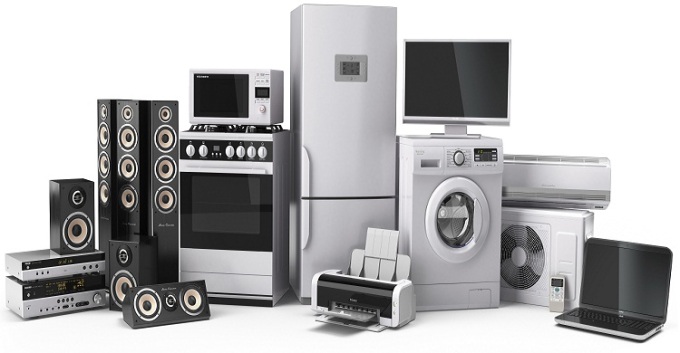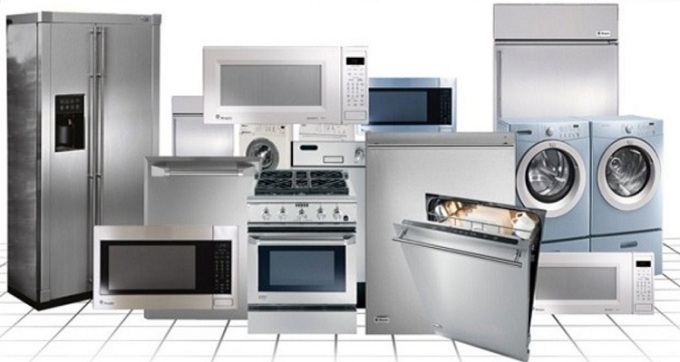The report titled “India Large Appliances Market Outlook to 2020- Make in Initiatives to Reduce Imports and Growing Demand for Sensor Enabled Products to Drive Demand” provides a comprehensive analysis of large appliances market in India including revenue from domestic sale in television, washing machine, air conditioner and refrigerator. Market was also estimated based on volume sales in each category. Market is segmented based on product type and sub segmented based on their essential features and price range along with distribution channel. The report also covers the snapshot of logistics, competitive landscape of major players in India large appliances market and export and import scenario. The report concludes with market projections for future and analyst recommendation highlighting the major opportunities and cautions.
The sector has been witnessing significant growth in recent years, supported by several drivers such as the emerging retail boom, real estate and housing demand, greater disposable income and an overall increase in the level of affluence of a significant section of the population. The industry is represented by major international and local players such as BPL, Videocon, Voltas, Blue Star, MIRC Electronics, Titan, Whirlpool and several others. The market for large appliances was evaluated at USD ~ million during 2015, grown at a CAGR of ~% during 2010-2015. The major challenge for the consumer durables market is limited penetration of home appliances in rural areas. It has been witnessed that about ~% of Indian population that lives in its villages still does not have access to consumer electrical appliances.

Television: Television has accounted for the largest revenues in India large appliances market with a share reported at ~% during 2015. Surge in personal disposable incomes, launch of smart TVs with advanced technologies and rise in number of nuclear families have supported the demand. Consumers are switching to flat panel televisions, which have led to phasing out of CRT (cathode ray tube) TV sets from the market.
Washing Machines: Washing machines market has been the second largest revenues contributor to the market during 2015. This category has contributed ~% share to the revenues which has increased from ~% in 2010. The washing machines market in India has increased at a CAGR of ~% during 2010-2015. The front loading washing machine category contributes ~% of the overall washing machine market in the country, which is very ~ compared to the developed countries. This category contributes about ~% in developed countries like US and Europe.
Air Conditioners: The revenue share of air conditioner sales was evaluated at ~`% during 2015, which has declined from ~% in 2010. Decline in sales for window ACs has led to this decline in share which was partially offset by surge in sales volume for split ACs. Domestic production for ACs was evaluated at ~ million units in 2015 which has increased from ~ million units in 2010.
Refrigerators: Revenues share of refrigerator was marked at ~% during 2015 that has declined from ~% in 2010. Refrigerator market in India is led by LG and Samsung followed by Whirlpool with a market share of around ~% during 2015. Leading five major players in India refrigerators market accounted for around ~% market share. Improved living standards, increase in number of nuclear families, large untapped rural market, rapid urbanization, environmental changes and surge in income have driven the refrigerator sales in India.
Competition in India large appliances market is highly intense. In additional to traditional competitors such as Videocon, Panasonic, Voltas and Whirlpool, there are expanding foreign companies such as LG, Samsung and IFB. India customer base is characterized by large and sophisticated customers who always have varied choices and demand competitive and innovative products at economical prices. The replacement demand in India is lower relative to Chinese and Japanese economy.
Revenues for large appliances in India are anticipated to increase at a CAGR of ~% during the period 2016-2020. With rising spend on consumer discretionary goods and the development of product technology, the demand for the diverse consumer durable goods are growing. Demonetization may have a short term quarterly impact on the sales of large appliances but long term outlook is positive for the market. With GST constitutional amendment bill passed by the Rajya Sabha followed by some state legislatures, the government hopes that it would be able to implement GST from April 2017. Favorable tax environment, declining prices of LED components, cheap labor availability and changing preferences of the consumers for high-end products are some of the driving factors of growth for the India LED and OLED TV market.
Key Topics Covered in the Report:
India Large Appliances Market Genesis & Current Outlook
Logistics Handling for Large Appliances in India
Export and Import Scenario of Large Appliances in India
Snapshot of Online Sales for Large Appliances in India
Government Initiatives in India Large Appliances Market
Trends and Developments in India Large Appliances Market
Competition Scenario in India Large Appliances Market
Market Share of Major Players in India Large Appliances Market, 2015
Competitive Landscape of Major Players in India Large Appliances Market
Competitive Landscape for Emerging Players in India Large Appliances Market
India Large Appliances Future Outlook and Projections, 2016-2020
India Air Conditioner Market
India Washing Machine Industry
India Refrigerator Market Size
India Television Market
India Large Appliances Market
Trends Development Large Appliances
Market Share Large Appliances India
India Air Conditioner Sales
Washing Machine Revenue Statistics
Refrigerator Market Competition
Television Sales Household India
Residential AC Market in India
India Online Electronics Sales
Online Trends Large Appliances
Household Appliances Market in India
Domestic Production AC in India
Export Data Air Conditioner India
Washing Machine Import India
Import Volume Washing Machine
Export Scenario Large Appliance
Import Situation Refrigerator Market
Competition Market Share Large Appliance
Sharp Profitability Sales Television
Market Share Daikin Air Conditioner
Whirlpool Competition in Washing Machine
LG Sales Television
Samsung Market Share Large Appliance
Logistics Handling for Large Appliances in India
Export and Import Scenario of Large Appliances in India
Snapshot of Online Sales for Large Appliances in India
Government Initiatives in India Large Appliances Market
Trends and Developments in India Large Appliances Market
Competition Scenario in India Large Appliances Market
Market Share of Major Players in India Large Appliances Market, 2015
Competitive Landscape of Major Players in India Large Appliances Market
Competitive Landscape for Emerging Players in India Large Appliances Market
India Large Appliances Future Outlook and Projections, 2016-2020
India Air Conditioner Market
India Washing Machine Industry
India Refrigerator Market Size
India Television Market
India Large Appliances Market
Trends Development Large Appliances
Market Share Large Appliances India
India Air Conditioner Sales
Washing Machine Revenue Statistics
Refrigerator Market Competition
Television Sales Household India
Residential AC Market in India
India Online Electronics Sales
Online Trends Large Appliances
Household Appliances Market in India
Domestic Production AC in India
Export Data Air Conditioner India
Washing Machine Import India
Import Volume Washing Machine
Export Scenario Large Appliance
Import Situation Refrigerator Market
Competition Market Share Large Appliance
Sharp Profitability Sales Television
Market Share Daikin Air Conditioner
Whirlpool Competition in Washing Machine
LG Sales Television
Samsung Market Share Large Appliance
For more information about the publication, refer to the link below:
Related Reports
Contact Us:
Ken Research
Ankur Gupta, Head Marketing & Communications
Ankur@kenresearch.com
+91-9015378249
Ken Research
Ankur Gupta, Head Marketing & Communications
Ankur@kenresearch.com
+91-9015378249






